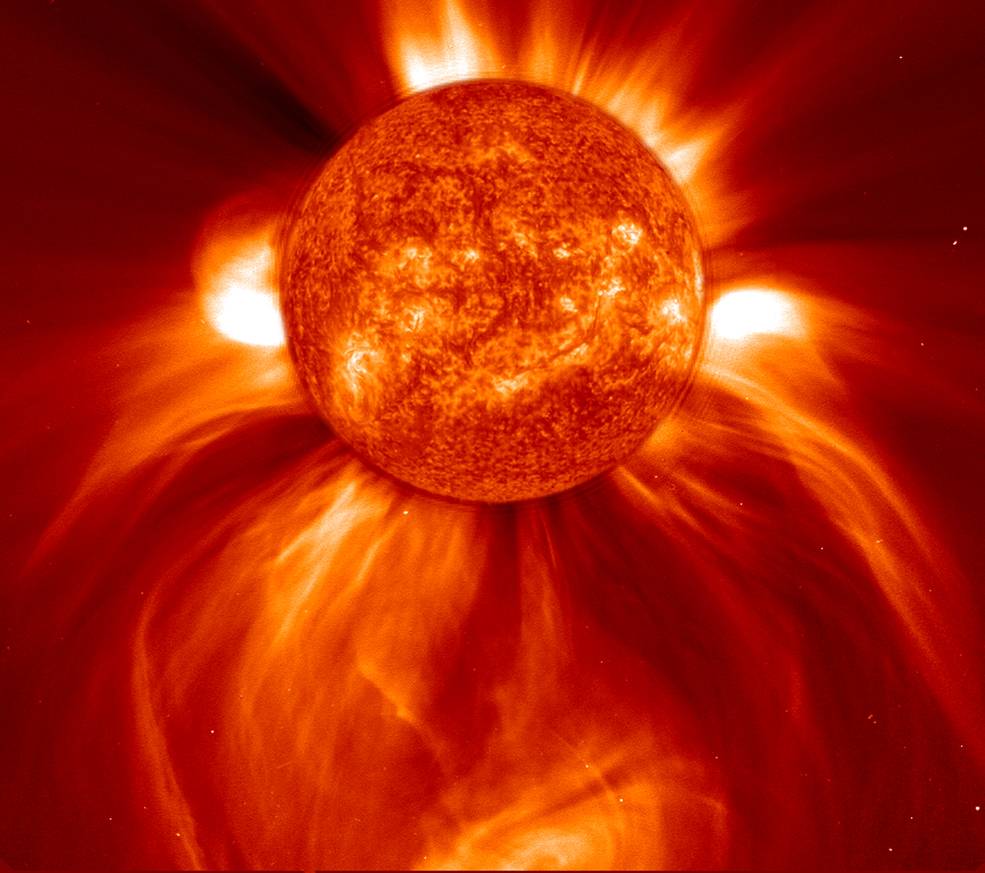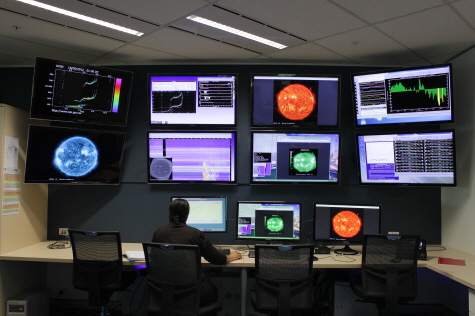Out of this world: monitoring space weather
04 October 2016
We’re all familiar with the impacts of weather in the lowest 10 km of our atmosphere—known as ‘terrestrial tropospheric weather’. It’s what we experience all around us; when it’s hot or cold, rainy or sunny, calm or stormy.
Less obvious is how weather in space affects us. As society becomes increasingly dependent on technology, including space-based infrastructure such as satellites, the more we’re at risk from the impacts of space weather.
Recording solar activity 150 million kilometres away, the Bureau's Space Weather Services team monitor and provide advice on space weather conditions that impact a range of industries, from radar operations to radio communications.

Image: Coronal mass ejections cause geomagnetic and ionospheric storms. Credit: ESA/NASA/SOHO.
Why is observing space weather important?
Continuing an age-old tradition started by one of the scientific revolution forefathers—Galileo in 1612—a solar analyst sketches sunspots every morning at the Bureau's solar observatory in Learmonth, Western Australia.
The sun is the source of 'normal' terrestrial weather. It is also the primary (but not the only) source of space weather. The solar wind from the sun streams past the earth and is mostly deflected by the earth's magnetic field. But variations in the solar wind cause changes in the earth's magnetic field.
Sometimes these changes are gradual increases in density or velocity. Sometimes they are huge clouds of atoms preceded by a shockwave (a little like an ocean tsunami).
Occasionally a huge release of magnetic energy, called a solar flare, occurs on the sun. Flares can produce large quantities of x-rays which affect the earth's atmosphere. They can also accelerate atomic particles (mostly protons) to very high speeds (a substantial fraction of the speed of light!). These high-energy particles are dangerous to humans and can reach the stratosphere where jet aircraft fly.
Large geomagnetic disturbances are quite rare events, even near the peak of the solar cycle. However, they can have a range of effects on global radio communications, on satellite and spacecraft operations, and a host of other technological systems, including long distance pipelines and electricity grids.

Graphic: potential impacts from space weather.
Does aurora activity affect the earth?
Auroras, caused by energetic particles raining down into the earth’s upper atmosphere from the near-earth space environment, are a visible effect of space weather. While the dancing lights of the aurora (also called the southern/northern lights, depending on your hemisphere) provide a spectacular visual display, they’re the effect of powerful emissions from the sun and geomagnetic storms, which can disturb the earth's magnetic field and ionosphere.
Two to four days after the launch of a coronal mass ejection, the earth is bombarded by a high speed stream of solar particles and solar magnetic field. The interaction of the solar particles and magnetic field with the earth’s magnetic field supplies the energy driving geomagnetic storms. Charged particles—electrons and protons—within the earth’s magnetosphere (the region where its magnetic field is the predominant magnetic field) are accelerated to high energies during a major geomagnetic storm.
The energised particles spiral around the magnetic field lines and follow them towards high altitudes. When the energised particles reach the upper atmosphere, they strike molecules and atoms of air at around 100 km from the earth's surface (e.g. nitrogen and oxygen) causing them to radiate light—creating the beautiful colours of the aurora. The process is similar to that occurring in a fluorescent light bulb.
.jpg)
Image: aurora australis, Davis, Antarctica. Credit: Aaron Stanley.
How does the Bureau monitor space weather?
Continuous monitoring of solar activity is vital in ensuring the ongoing operation of our communication and technological systems. To do this, the Bureau’s Space Weather Services team relies on a wide range of observations data, including information from solar observatories, and equipment such as ionosondes and magnetometers. The Bureau’s observations are also integral to the exchange of global space weather data, coordinated by the World Meteorological Organisation.

Image: The Bureau’s space weather forecasting centre.
More information
To find out more or to subscribe to the Bureau’s Space Weather Services products visit: www.sws.bom.gov.au
Space weather and the very real risks the Sun poses to Earth

Subscribe to this blog to receive an email alert when new articles are published.


Comment. Tell us what you think of this article.
Share. Tell others.